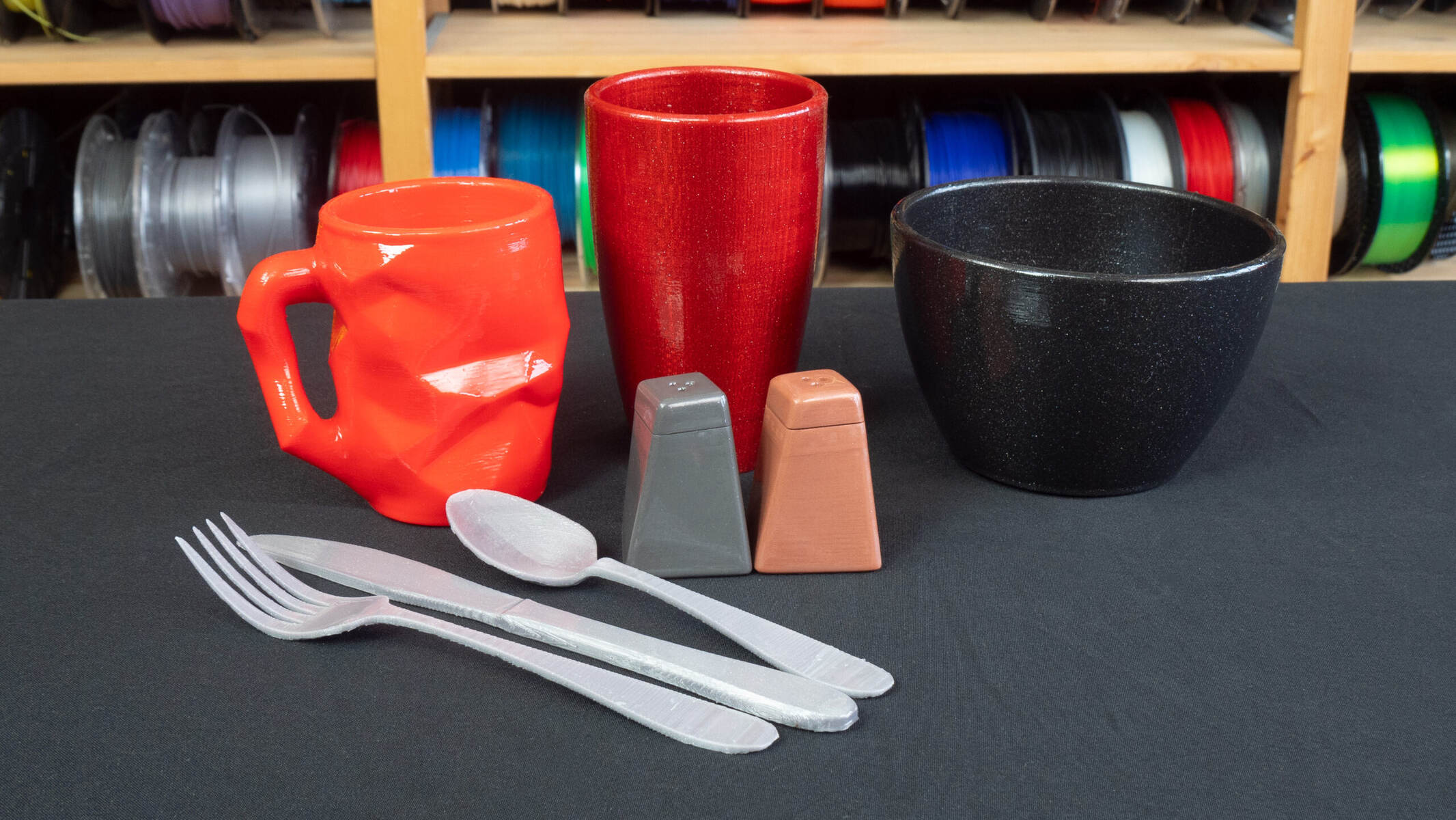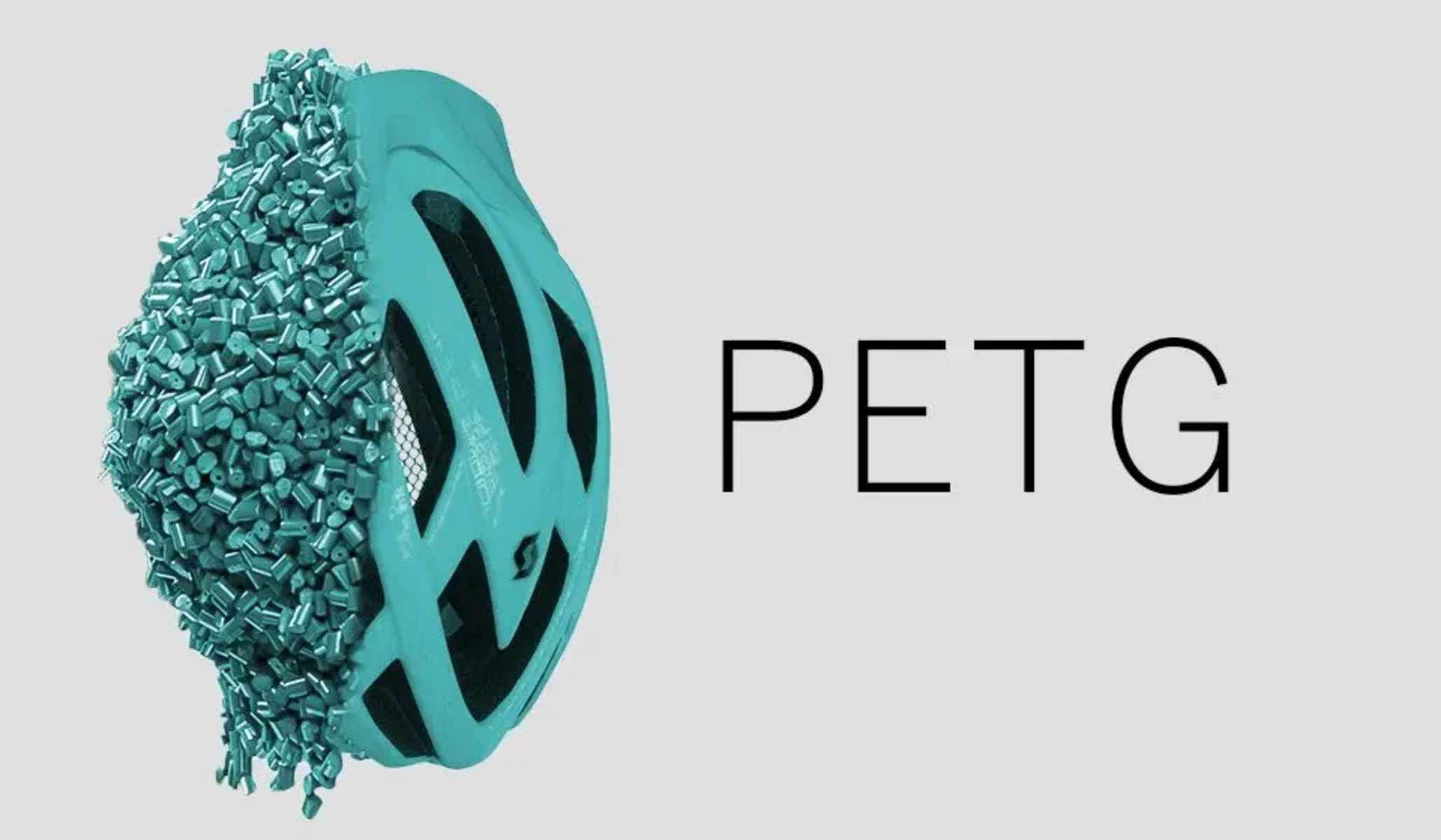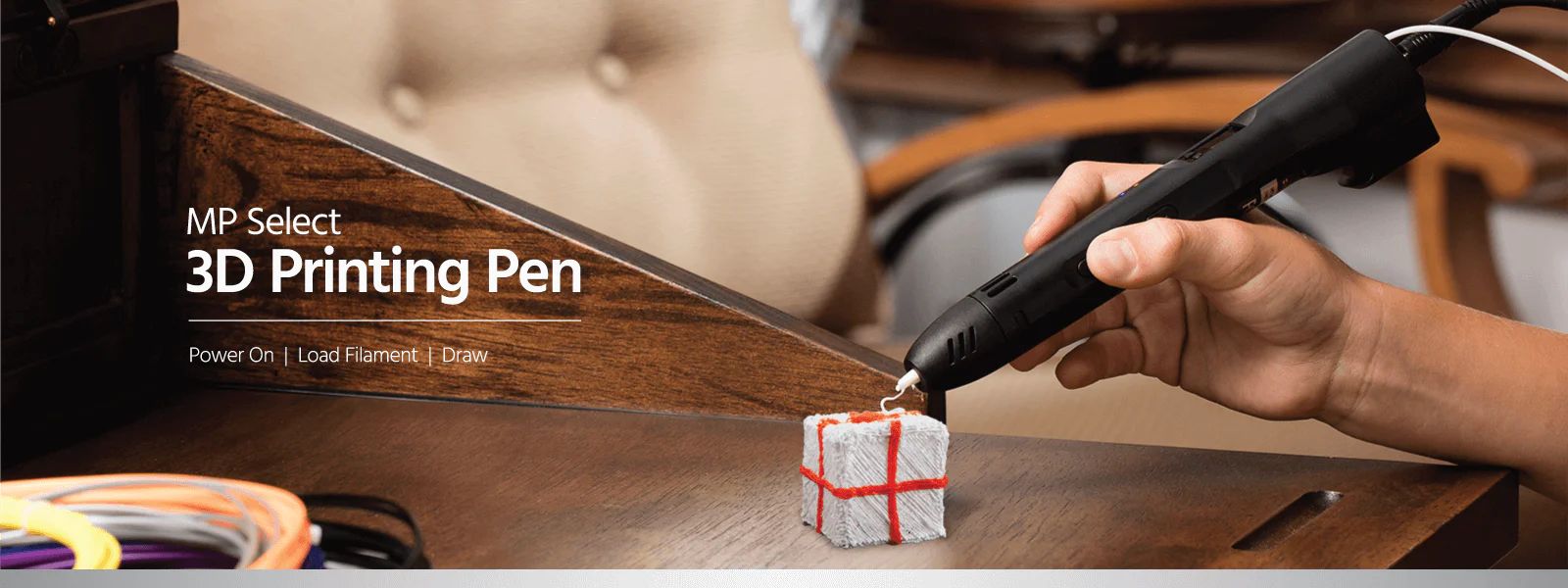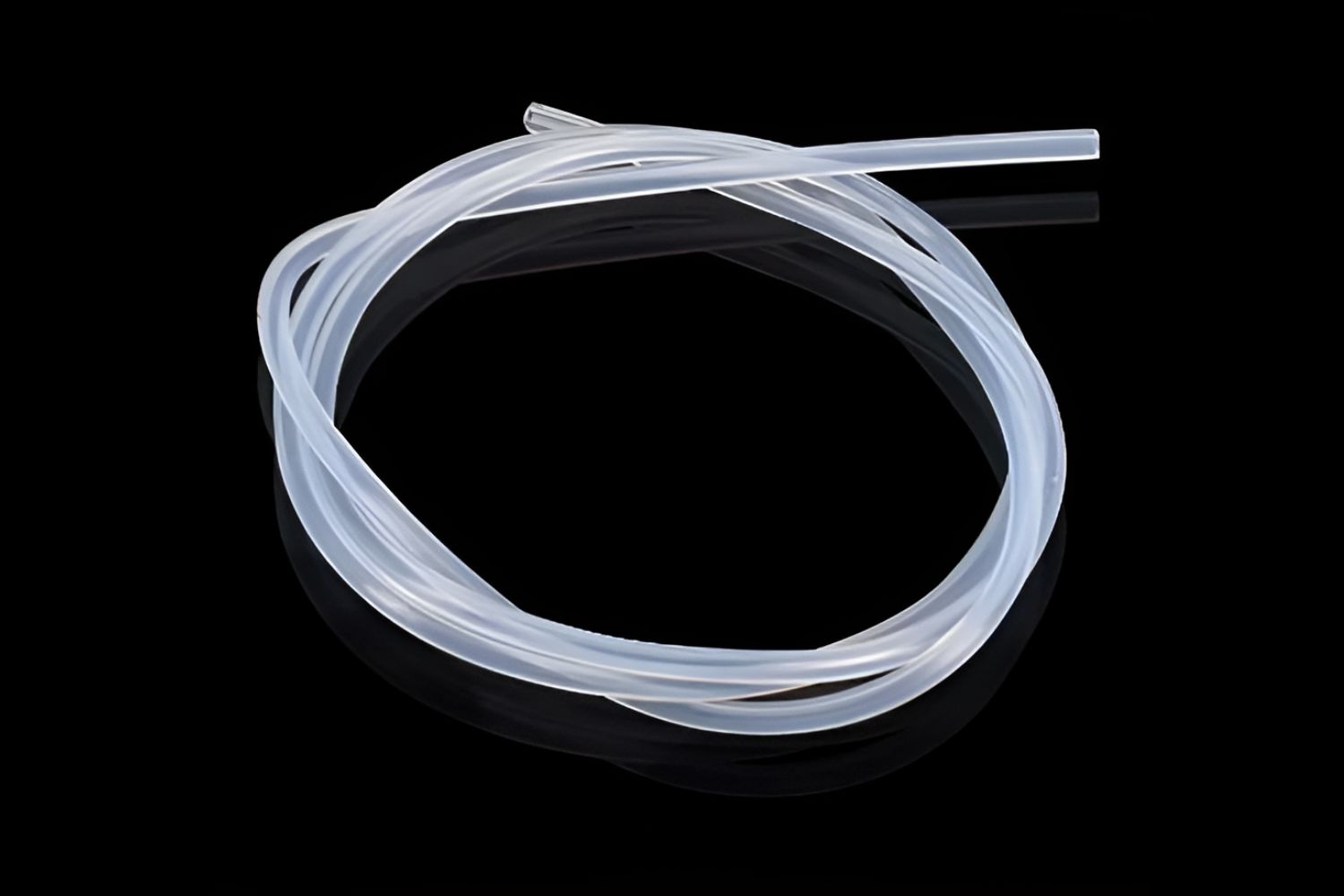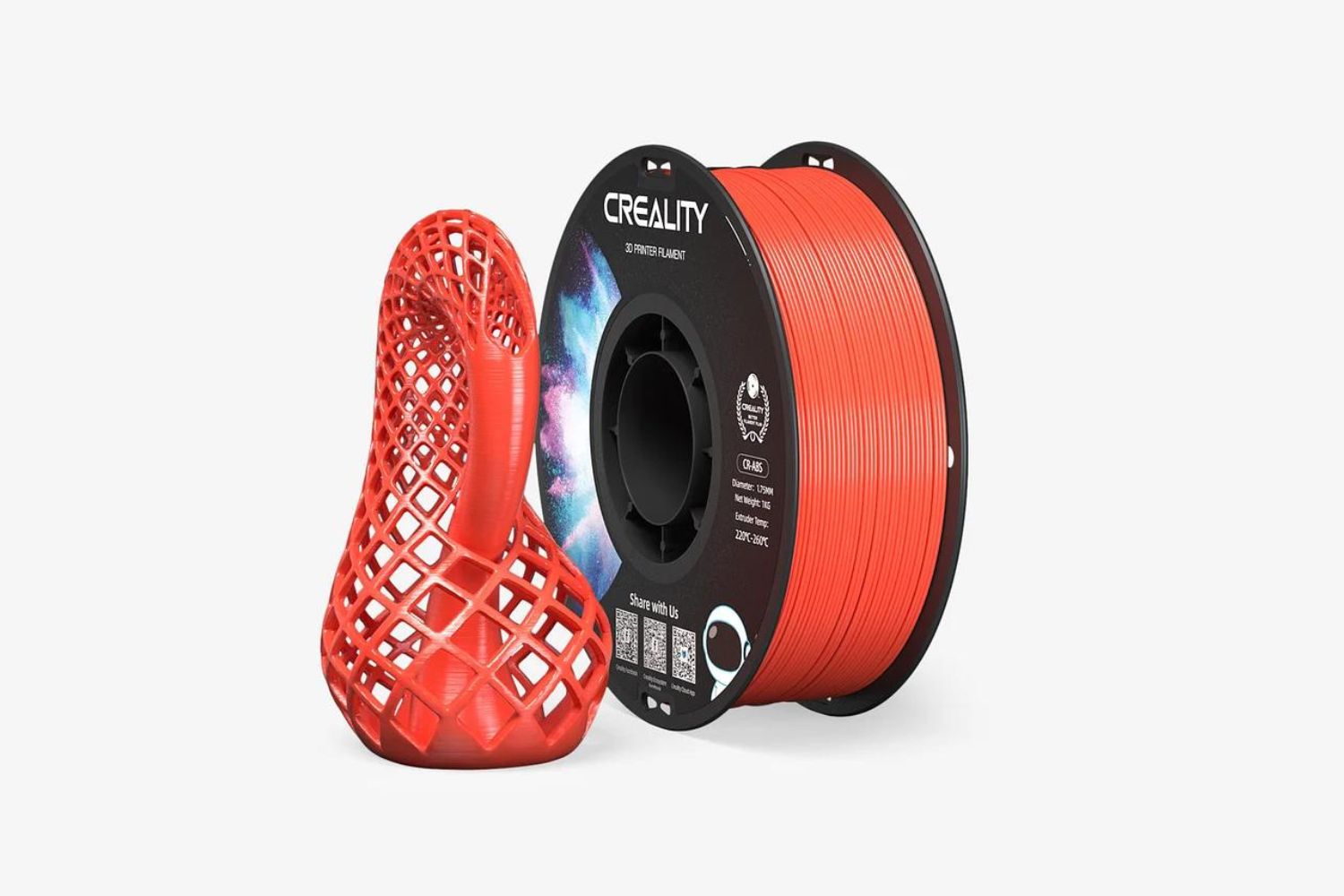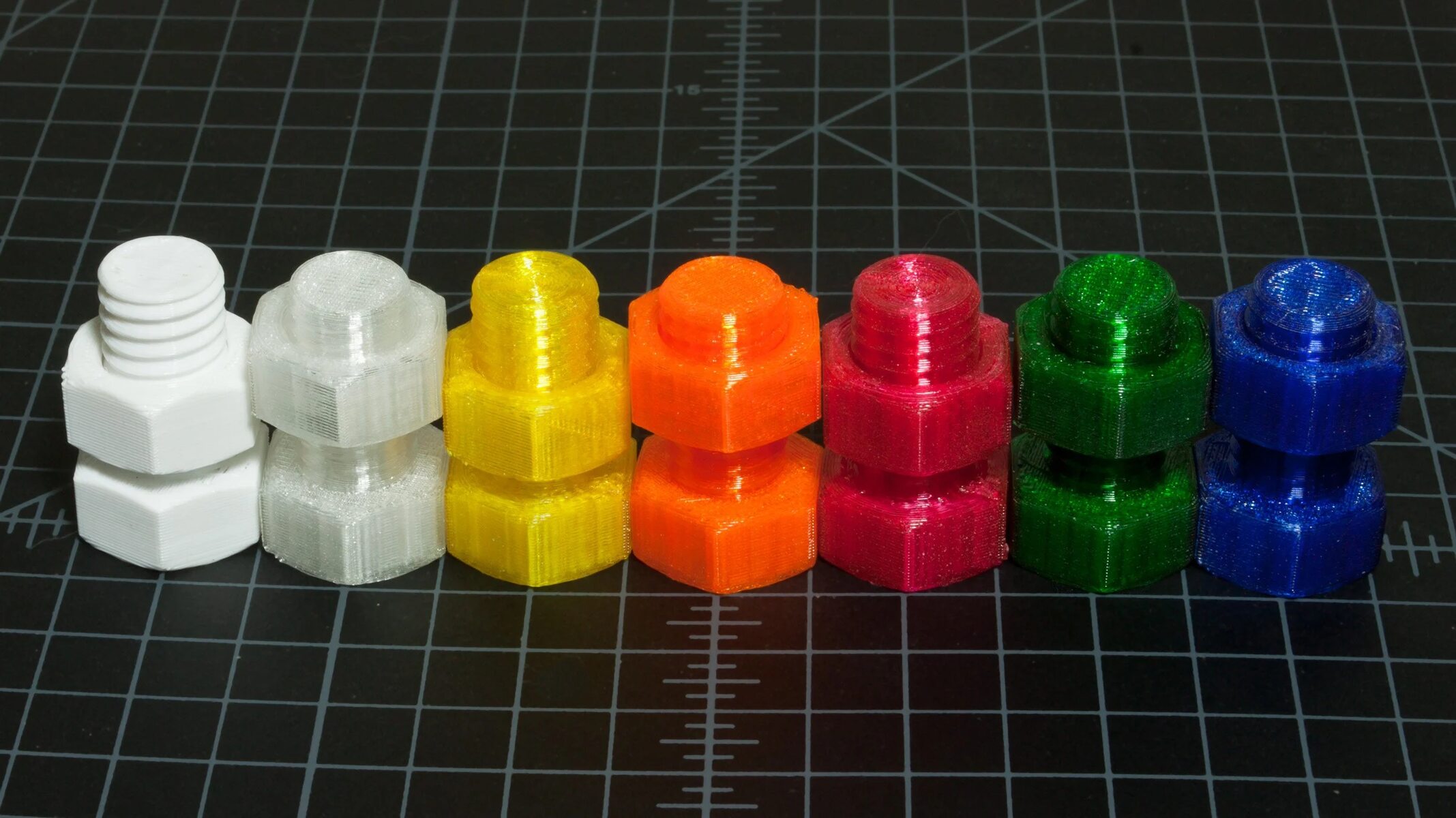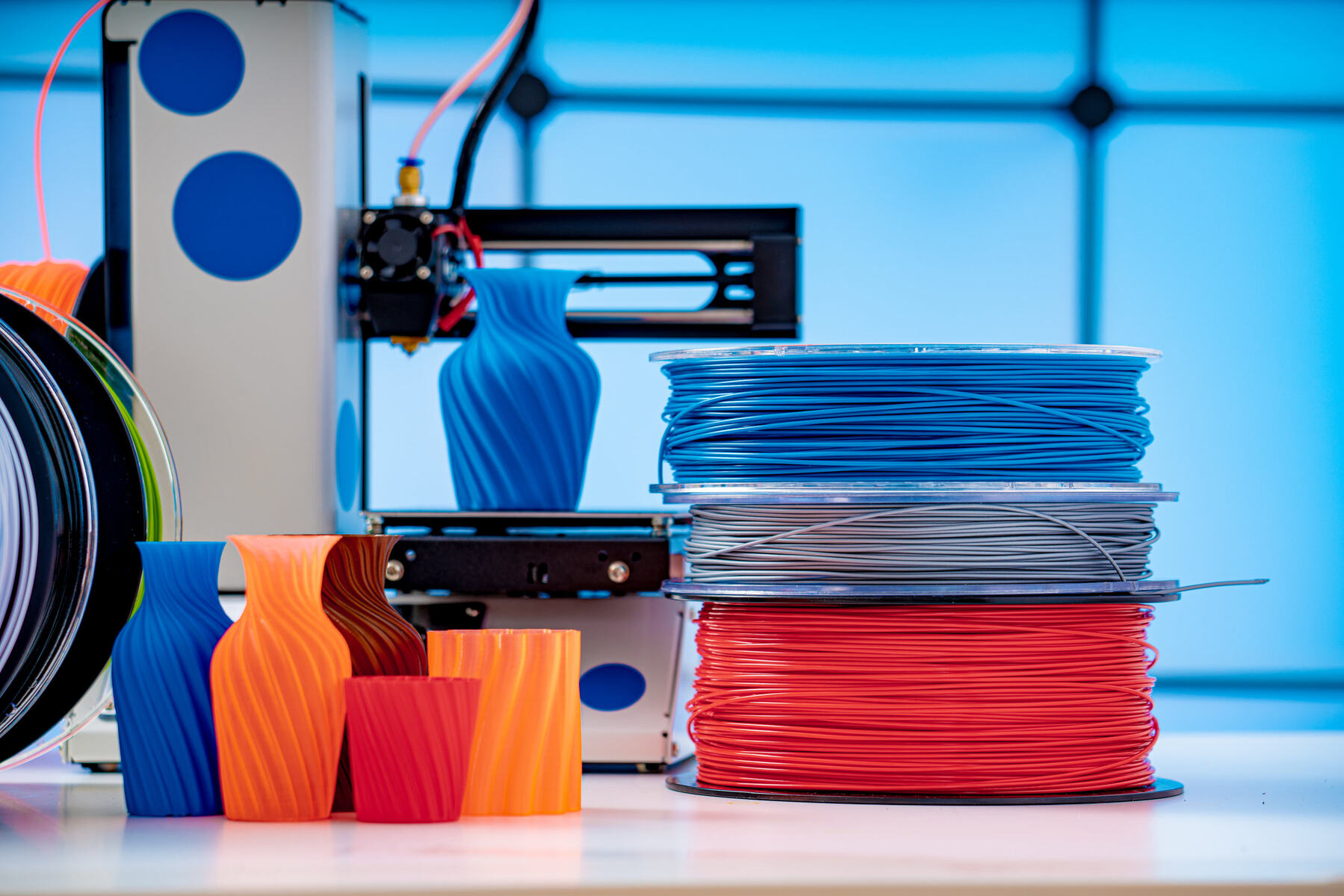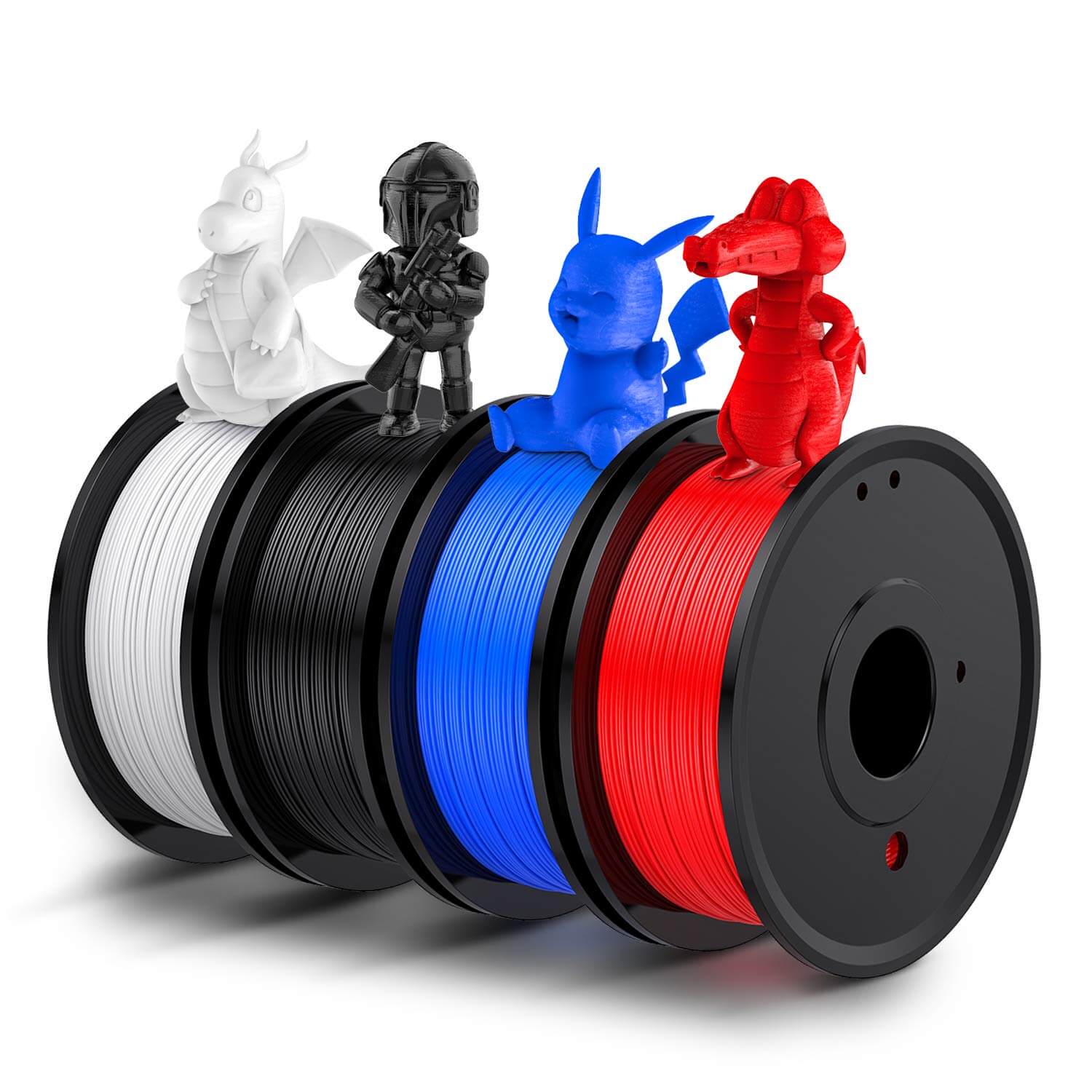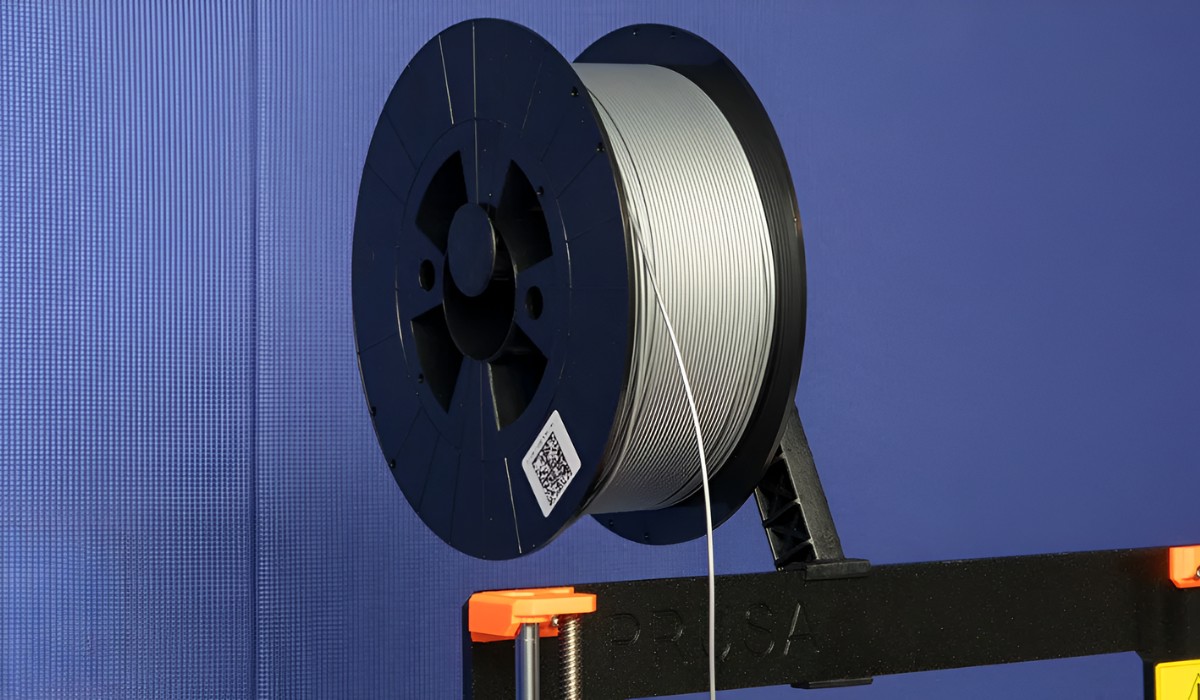Introduction
When it comes to 3D printing, choosing the right filament is crucial, especially if you plan to print items that come into contact with food. Ensuring that the filament you use is food-safe is important to avoid any potential health risks. In this article, we will explore various types of 3D printer filaments that are considered food-safe.
Before diving into specific types of filaments, it’s worth noting that a filament being labeled as “food-safe” does not automatically mean you can consume the printed object. While these filaments are deemed safe to use in food-related applications, it is important to exercise caution and consider factors such as the 3D printing process, post-processing, and the intended use of the printed item.
Filaments used in food-safe applications should comply with certain standards and regulations, such as FDA (Food and Drug Administration) approval or being free from harmful additives. It is also recommended to thoroughly clean and sanitize any printed items before using them with food.
Now, let’s explore some of the most common food-safe filament options available in the market.
PLA Filament
PLA (Polylactic Acid) filament is one of the most popular choices for 3D printing, and it’s also considered food-safe. PLA is derived from renewable resources such as cornstarch or sugarcane, making it biodegradable and environmentally friendly.
When printing with PLA, it is important to note that not all PLA filaments are specifically food-safe. Look for PLA filaments that are explicitly labeled as food-safe or meet FDA regulations for potential food contact. These filaments are manufactured using food-grade raw materials and additives to ensure that they are suitable for food-related applications.
One advantage of PLA filament is its low melting point. It can be printed at relatively low temperatures, which makes it compatible with most 3D printers. PLA also has a pleasant sweet aroma during printing compared to other filaments, making it more enjoyable to work with.
However, PLA does have its limitations. It is not suitable for high-temperature applications, as it can deform or melt under extreme heat. PLA is also less resistant to chemicals and may degrade over time when exposed to certain substances. It is important to consider the specific requirements of your food-related application before using PLA filament.
In summary, PLA filament is a popular and food-safe option for 3D printing. It offers biodegradability, ease of use, and compatibility with most printers. Just make sure to choose PLA filaments specifically labeled as food-safe or meeting FDA regulations to ensure the safety of your printed items.
ABS Filament
ABS (Acrylonitrile Butadiene Styrene) filament is another commonly used material in 3D printing. While ABS is not typically considered food-safe, there are specific ABS filaments available in the market that are deemed safe for food-related applications.
ABS is known for its strength, durability, and heat resistance. It has a higher melting point compared to PLA, making it suitable for functional parts and objects that may be exposed to higher temperatures. ABS also offers better resistance to chemicals, making it more suitable for applications where the printed item may come into contact with certain substances.
When it comes to food safety, you must select ABS filaments that are explicitly labeled as food-safe. These filaments are typically manufactured using food-grade raw materials and additives while adhering to FDA regulations for potential food contact.
It’s worth noting that ABS filament releases potentially harmful fumes during the printing process. Proper ventilation or using an enclosed 3D printer with a filtration system is highly recommended when working with ABS filament. Additionally, thorough cleaning and post-processing are necessary to ensure that the printed objects are safe for food use.
While ABS may not be the first choice for food-related 3D printing due to the potential release of fumes and the need for careful handling, it can still be a viable option if you choose a specifically designated food-safe ABS filament.
In summary, ABS filament is known for its strength, durability, and heat resistance. While ABS itself is not inherently food-safe, there are ABS filaments available that meet food-safe standards. When using ABS filament for food-related applications, ensure that they are explicitly labeled as food-safe and take necessary precautions during the printing and post-processing stages.
PETG Filament
PETG (Polyethylene Terephthalate Glycol-modified) filament is a popular choice for 3D printing, known for its strong mechanical properties and versatility. While not all PETG filaments are food-safe, there are specific PETG options available that are suitable for food-related applications.
PETG filament offers excellent impact resistance, making it ideal for functional parts that may experience stress or heavy use. It also has good transparency, allowing for the creation of visually appealing prints. Additionally, PETG has a higher melting point compared to PLA, making it more heat-resistant.
When selecting PETG filament for food-safe printing, look for filaments that are specifically labeled as food-safe or meet FDA regulations for contact with food. These filaments are typically manufactured using food-grade raw materials and additives to ensure suitability for food-related applications.
Another advantage of PETG filament is its chemical resistance, making it more resistant to degradation and interaction with substances commonly found in food. PETG also has good water resistance, making it a suitable option for applications involving liquids or moist environments.
When printing with PETG, it is important to note that it requires higher printing temperatures compared to PLA. Proper temperature control and calibration are crucial to achieve high-quality prints. PETG filament also has a tendency to be stringy or ooze, so optimizing retraction settings is important to minimize these issues.
In summary, PETG filament offers a balance of strength, versatility, and chemical resistance. While not all PETG filaments are food-safe, there are food-safe options available that meet the necessary regulations for food contact. When using PETG filament for food-related applications, ensure that they are explicitly labeled as food-safe or comply with FDA regulations for added safety.
Nylon Filament
Nylon filament is a versatile and durable material commonly used in various 3D printing applications. While not all nylon filaments are food-safe, there are specific types of nylon filament that are deemed suitable for food-related uses.
Nylon offers excellent mechanical properties, including high tensile strength, flexibility, and impact resistance. It is also known for its resistance to abrasion and chemical interactions. These properties make nylon filament a popular choice for functional and durable parts.
When selecting nylon filament for food-safe printing, it is crucial to choose filaments that are explicitly labeled as food-safe or meet relevant food-grade regulations. These filaments are typically manufactured using food-grade raw materials and additives while ensuring compliance with safety standards.
One advantage of nylon filament is its compatibility with a wide range of printing techniques, including FDM (Fused Deposition Modeling) and SLS (Selective Laser Sintering). However, it’s important to note that different printing techniques may require specific types of nylon filaments.
It’s worth mentioning that nylon filament typically absorbs moisture from the air, which can affect print quality and performance. Proper storage in a dry environment and using a filament dryer or dehumidifier can help mitigate this issue.
Furthermore, nylon filament requires higher printing temperatures compared to some other filaments, such as PLA or PETG. It is crucial to have precise temperature control to achieve optimal print results with nylon.
In summary, nylon filament offers excellent mechanical properties and is suitable for various 3D printing applications. When using nylon filament in food-related applications, it is essential to select filaments specifically labeled as food-safe or meeting applicable food-grade regulations. Proper storage and temperature control are important considerations to ensure the best results when printing with nylon filament.
TPU Filament
TPU (Thermoplastic Polyurethane) filament is a flexible and elastic material that is widely used in 3D printing. While not all TPU filaments are suitable for food-related applications, there are food-safe options available for those who want to print flexible objects that come into contact with food.
TPU filament offers excellent elasticity and durability, making it ideal for creating objects that require flexibility or impact resistance. It has a rubber-like texture and can be used to print items such as food-safe gaskets, seals, or flexible utensils.
When selecting TPU filament for food-safe printing, look for filaments that are specifically labeled as food-safe or meet relevant regulatory requirements. These filaments are typically manufactured using food-grade materials and additives to ensure their safety for food contact.
One important consideration when working with TPU filament is its printing parameters. TPU has a lower melting point compared to some other filaments, such as ABS or nylon, and may require adjustments to the printer’s settings. It is recommended to use a direct drive extruder for better control over the flexible filament during the printing process.
TPU filament is resistant to oils, grease, and chemicals, making it suitable for food-related applications where the printed object may be exposed to various substances. It also offers good resistance to wear and tear, making the resulting prints durable and long-lasting.
It’s important to note that post-processing and cleaning are essential when using TPU filament for food-related prints. Thoroughly wash and sanitize the printed objects before using them with food to ensure hygiene and safety.
In summary, TPU filament is a flexible and elastic material that can be used to create food-safe prints. When choosing TPU filament for food-related applications, look for filaments specifically labeled as food-safe or meeting relevant regulations. Follow proper printing parameters and post-processing to ensure the safety and durability of the printed objects.
PEEK Filament
PEEK (Polyether Ether Ketone) filament is a high-performance thermoplastic known for its exceptional mechanical and thermal properties. While PEEK itself is not typically food-safe, there are specific PEEK filaments available that are deemed suitable for food-related applications.
PEEK filament offers outstanding heat resistance, with a melting point reaching up to 343 degrees Celsius (649 degrees Fahrenheit). It also exhibits excellent chemical resistance, making it suitable for applications where the printed object may come into contact with aggressive substances.
When selecting PEEK filament for food-safe printing, it is crucial to choose filaments that are explicitly labeled as food-safe or compliant with relevant regulatory standards. These filaments are often manufactured using food-grade raw materials and additives to ensure their suitability for food contact.
PEEK filament is renowned for its exceptional mechanical properties, including high tensile strength, excellent dimensional stability, and low flammability. It also exhibits resistance to moisture absorption, which is essential for maintaining the integrity of the printed object in humid environments.
It’s important to note that successfully printing with PEEK filament requires specific printer capabilities and a controlled printing environment. PEEK generally requires high printing temperatures and a heated build chamber to ensure optimal adhesion and minimize warping or shrinkage.
Additionally, post-processing operations such as annealing and machining may be required to achieve the desired finished product with PEEK filament. As PEEK is a high-performance material, extra precautions and expertise may be necessary when working with it.
Given its exceptional thermal and mechanical properties, PEEK filament can be a suitable choice for food-related applications that require high-performance materials. However, it is important to ensure that the chosen PEEK filament is explicitly labeled as food-safe and adheres to applicable regulations.
In summary, PEEK filament is a high-performance material with exceptional mechanical and thermal properties. However, not all PEEK filaments are food-safe. When selecting PEEK filament for food-related applications, choose filaments specifically labeled as food-safe and compliant with relevant regulatory standards. Proper printer capabilities and post-processing may be required for successful and safe printing with PEEK filament.
Other Food-Safe Filament Options
In addition to the filaments mentioned above, there are a few other food-safe filament options worth considering for your 3D printing projects.
- HDPE Filament: High-Density Polyethylene (HDPE) filament is a durable and impact-resistant material that is commonly used in food storage containers and bottles. While not as commonly available as some other filaments, there are food-safe HDPE filaments that can be used for food-related prints.
- Copolyester (CPE) Filament: Copolyester filaments, such as PETG variations, are known for their clarity, toughness, and chemical resistance. Some PETG filaments are explicitly labeled and certified as food-safe, making them suitable for applications where the printed object may come into contact with food.
- PLA+ Filament: PLA+ is an enhanced version of PLA filament that offers improved strength and heat resistance. While not all PLA+ filaments are explicitly labeled as food-safe, there are options available that meet the necessary regulatory requirements for food contact.
- PCL Filament: Polycaprolactone (PCL) filament is a biodegradable thermoplastic that has a low melting point. It is commonly used in medical applications and can also be found in food-safe variations suitable for 3D printing.
When considering these filaments or any other options, it is important to ensure that the specific filaments you choose are explicitly labeled as food-safe or meet the relevant regulatory standards for food contact. Always refer to the manufacturer’s guidelines and specifications to ensure a safe and proper printing experience.
Furthermore, keep in mind that while these filaments may be deemed food-safe, proper cleaning and sanitization of the printed objects are essential before using them with food. It is advisable to thoroughly wash and/or sanitize the printed items to maintain optimal hygiene and safety.
In summary, there are several other food-safe filament options available for 3D printing, such as HDPE, copolyesters (such as PETG), PLA+, and PCL. Ensure that the chosen filaments are explicitly labeled as food-safe or meet relevant regulatory standards. Proper cleaning and sanitization of the printed objects are necessary before using them in food-related applications.
Conclusion
Choosing the right filament for food-safe 3D printing is crucial to ensure the safety and integrity of the printed objects. Throughout this article, we have discussed various filament options that are considered food-safe.
PLA, ABS, PETG, nylon, TPU, and PEEK are all viable choices for food-related applications, provided that you select filaments that are explicitly labeled as food-safe or meet the relevant regulatory standards. Each filament has its own unique properties and considerations, such as temperature requirements, mechanical strengths, and chemical resistance.
Additionally, we explored other food-safe filament options, including HDPE, copolyesters (such as PETG), PLA+, and PCL, which offer their own benefits and considerations for food-related 3D printing.
Regardless of the filament you choose, it is imperative to follow proper cleaning and sanitization procedures for the printed objects before using them with food. Thoroughly wash and/or sanitize the printed items to ensure optimal hygiene and safety.
Remember, while using food-safe filaments provides a level of assurance, it is important to consider other factors such as the 3D printing process, post-processing, and the intended use of the printed objects. Exercise caution and make informed decisions when using 3D printed items in food-related applications.
In conclusion, by selecting the appropriate food-safe filament and taking necessary precautions, you can confidently create 3D printed objects that can be safely used in food-related applications. Take advantage of the wide range of filament options available and ensure the quality and safety of your prints for a fulfilling and successful 3D printing journey.







